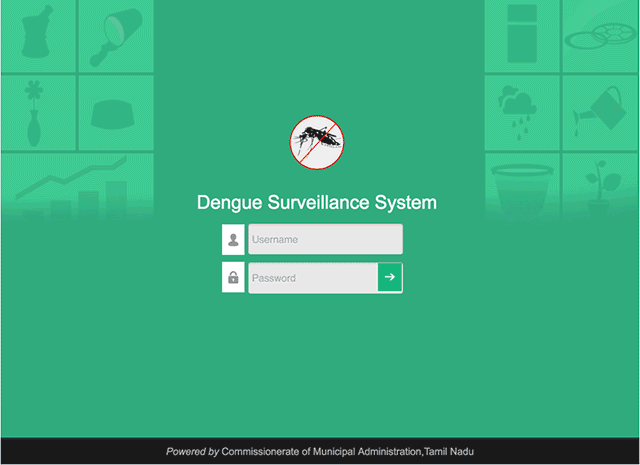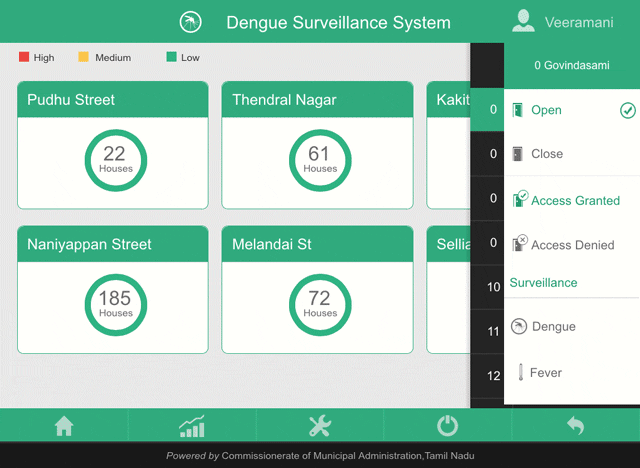Challenges
The Municipal Administration conducts field surveys and inspections to detect the presence of potential disease vectors due to improper storage, handling and disposal of plastic containers, improper waste disposal and natural conditions. ULBs also conducts field surveys and inspections for symptoms of potential vector diseases such as body pain, joint pain, rash, bleeding, dehydration, cough and dizziness. CMA Office focuses its prevention efforts on controlling the source vectors and larvicides that may lead to control of Dengue, Fever and Malaria. Multi-purpose health works carry out regular vector surveillance and source reduction activities by visitinghouses door-to-dooracross ULB and manually update field survey forms. Manual data entry process meant multi-purpose health works were spending valuable time on repetitive data entry tasks, for filing reports with Municipal Administration. Data entry errors coupled with delays in dengue vector surveillance data reporting diminished the accuracy of the data collected from the field.
Solution Offered
Extranet SharePoint portal was developed to allow municipal administration to schedule door-to-door surveillance activities for multi-purpose health workers. This schedule will be automatically made available for field visit via a tablet application.
A tablet application was developed for ease of multi-purpose health workers.Each field staff gets the scheduled street and house – door number information upon Tablet App login. Field staff uses a touch interface application for selecting the individual activity tiles related with vector surveillance and fever symptoms data collection. On completion of field visit multi-purpose health workers can sync field data automatically to the backend SharePoint Portal for Vector Surveillance Reporting to Municipal Administration for executive decision making.
Business Impact
The Vector Surveillance System helped to improve day-to-day field data capturing accuracy for Anti-Larval and Source Reduction activities. Helped improve frequency of vector surveillance data reporting from ULBs to CMA, for executive decision making. The application has the ability to scale to multi-dimensional vector based disease analytics and reporting. The application helped in the transformation from paper trail to web enabled mobile application for effective disease control activities.
Technology
- Windows Server 2012 Datacenter
- SQL Server 2012 Enterprise
- SharePoint Server 2013 Enterprise
- iOS
- Android
Business Need
- Enterprise Content Management
- Enterprise Mobility
Our Work
A SharePoint portal was developed for ULB Administration to schedule dengue vector surveillance and source reduction activities. A companion tablet application was developed for multi-purpose health workers to conduct door-to-door vector surveillance and source reduction activities.


